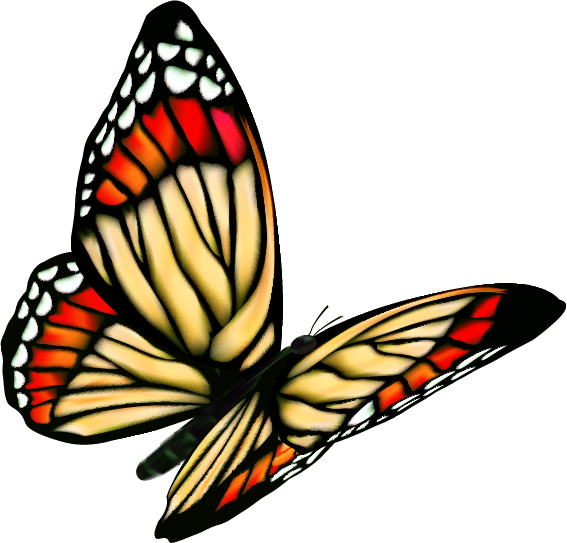Escaping into the Eerie: An Interview with Carolyne Topdjian
 Of all the authors and artists I’ve interviewed (I’m approaching 100 soon!), Carolyne Topdjian holds the record for most interesting author photo. Knowing what I now know about her debut novel and her haunted house (keep reading, please!), the photo makes sense. That debut novel, The Hitman’s Daughter, released a few days ago, and already it’s gaining praise. Library Journal called the book “a fast-paced haunting novel of survival,” while author Elizabeth Everett wrote, “If you love thrillers that keep you up all night—and make you keep the light on afterwards—this book is for you!” The terms atmospheric, twisty, and thrilling are being applied to the novel in spades, which is good news for Carolyne. The week of book launch is full of insanity for any author, especially one who is debuting, so I’m grateful to Carolyne for taking the time to answer a few questions.
Of all the authors and artists I’ve interviewed (I’m approaching 100 soon!), Carolyne Topdjian holds the record for most interesting author photo. Knowing what I now know about her debut novel and her haunted house (keep reading, please!), the photo makes sense. That debut novel, The Hitman’s Daughter, released a few days ago, and already it’s gaining praise. Library Journal called the book “a fast-paced haunting novel of survival,” while author Elizabeth Everett wrote, “If you love thrillers that keep you up all night—and make you keep the light on afterwards—this book is for you!” The terms atmospheric, twisty, and thrilling are being applied to the novel in spades, which is good news for Carolyne. The week of book launch is full of insanity for any author, especially one who is debuting, so I’m grateful to Carolyne for taking the time to answer a few questions.
Christina: Congrats on the publication of The Hitman’s Daughter. Can you give the readers a little background on where the inspiration for this book came from?
Carolyne: The initial inspiration behind The Hitman’s Daughter came from a stint I had as a shopgirl in a grand hotel. The chateau was part of the historical Grand Trunk Railway that used to run in the early twentieth century from Montreal to Toronto to Portland and beyond. Once I learned about the hotel’s boarded up trainline, I was forever fascinated. The seeds for Mave Michael’s story were planted then and there, but it wouldn’t be until years later that I actually developed them into a novel. I’ve always loved gothic settings and plotlines—especially ghost stories—so the genre and hotel felt like a perfect match. I had a great time escaping into the eerie atmosphere of the chateau and infusing it with mystery, fast-paced action, and romantic drama.
Christina: Karen Winn wrote of The Hitman’s Daughter, “This riveting novel is full of mystery, unexpected twists and turns, and long-buried secrets that sometimes only magic can unearth.” How do you balance giving enough information with holding back some to knock the readers with twists and turns? Can there be too many twists?
Carolyne: The first question is tough because I’m more of a panster than a plotter; a lot of these creative decisions happen subconsciously for me during drafting. I often won’t know a twist until it reveals itself to me. But then in the revision stages, it’s about taking that critical, big picture look. This is where my agent, editor, and critique partners are invaluable. I find balance through their feedback. Planting clues that lead to one or two exciting reveals is never simple, and my developmental edits are typically big ones. Similarly, I try to counterbalance clues with red herrings. In terms of too many twists, it’s really case by case, dependent on how a particular mystery and its use of layers are unraveled. Twists must be grounded and earned, else you risk giving readers whiplash or worse, losing their trust.
Christina: You’re a writer of “gothic suspense.” For those who might not know exactly what that means, can you clarify? What about gothic suspense is so compelling to you?
Carolyne: Sure! The gothic genre is rooted in classic macabre titles by authors like Edgar Allan Poe, Mary Shelley, or Shirley Jackson. The ingredients of the genre may include pathos and emotional drama, hauntings, bad weather, and abandoned or desolate settings. As author Erica Obey described it in a recent mystery panel, “Every gothic novel is about a girl and a house.” Examples of contemporary titles include Mexican Gothic by Silvia Moreno-Garcia or Home Before Dark by Riley Sager. For me, unlike the traditional horror genre, gothic suspense is less about telling a scary story, and more about creating an uncanny one for readers to reflect on. Gothic suspense keeps us on the edge of our seats, and yet the stories are eerie and surreal in how they reflect our reality and simultaneously draw out big emotions. I think that’s what makes gothic suspense so compelling for me. Drama squared.
Christina: In addition to novels, you’ve written short stories and essays. Do you prefer one form over the other? Do you approach writing short- and long-form works differently? Do you feel more equipped to write one form over the other?
Carolyne: Since writing novels takes longest of the three, it’s probably my favourite; narrating 300+ pages demands more psycho-emotional investment in your subject/characters than writing a short story or essay. Having said that, short stories are excellent challenges. To craft a compelling plot in 3,000 words or less requires extreme focus and sharp storytelling. There’s no luxury of another chapter, so I best get it right on that first page—paragraph—sentence. Essays, on the other hand, exercise a different “muscle” in me, since they draw exclusively on research, real anecdotes and facts. I find they’re more logical, overt in their theme, and potentially argumentative. Depending on the day or the week, I may find myself a much better essayist than novelist or vice versa.
Christina: You’re a professor in the Faculty of Media and Creative Arts at Humber College in Toronto. Does teaching inform your writing at all? What’s one of the greatest lessons you’ve learned from your students?
Carolyne: Working with emerging creative professionals absolutely informs my writing. For context, I teach courses in visual culture—everything from art history to popular culture to philosophies of beauty. My students may be majoring in visual arts or film studies or digital communications. They are inspiring in their openness to enter new worlds, test out critical ideas, and engage in creative discussions. One of the greatest lessons they’ve taught me is that you get what you give. Hard work matters. And it may not be instant, but in the long run, it will manifest into something positive.
Christina: Social media can be the bane of one’s existence, but as an author, it’s a great place to promote. Twitter seems to be your preferred social media venue. What do you like about Twitter in particular? Are you a fan of social media? What is one tip for someone who is just starting out in the Twitterverse?
Carolyne: As an introvert and generally private person, I’ve never been a huge fan of social media and public profiles; it’s definitely a demanding challenge for authors today. I fell into Twitter back in 2016 when I was querying agents, as a way to participate in pitch parties. (#PitDark was my very first event). Since then, I’ve discovered genuine, welcoming writing communities on Twitter and met many supportive folks. They also exist on other social media apps; but it’s more about personal preference and playing to your strengths. Twitter being text-based and short and sweet is easier for me than, for example, curating photos on Instagram. If you’re new to Twitter, I’d say follow hashtags in your area of interest and engage with other like-minded people. Before you know it, you find your community and your community finds you!
Christina: Let’s talk about this haunted house you live in. How long have you lived there? Aside from the television turning on at 3 a.m., what other instances of ghostly mayhem have you witnessed? What’s your secret to living harmoniously with the ghosts?
Carolyne: How much room do you have on your blog? LOL! I’ve been living in this centenarian house for about ten years. It’s listed as heritage so I’ve done some research into its original residents. For the record, I don’t believe there’s any violent or angry energy in the home—else I’d be hanging that “for-sale” sign faster than you can say “Casper’s gotta grudge.” But various strange and random occurrences have happened, often electrical, and too many to shrug off. They seem to occur in bursts for one or two weeks; then stop. Then a month or so later, something else odd happens and passes. Further to the TV example you reference, you can check out my tweet about my phone randomly calling my contacts named “Sarah” in the wee dark hours. Perhaps the scariest head-scratcher, though, was a couple of years ago. We had a recurring 3 a.m. incident of banging pipes in my basement. Eventually, we found it was linked to the underground sprinklers—not that the technician could explain why the pipes were jumping so violently. Needless to say, like the TV, we no longer leave our system operational at night. And low and behold, during the day? There are no electrical issues whatsoever.
Christina: It’s important to be able to pronounce an author’s name correctly. How do you pronounce your last name?
Carolyne: Happy to help! Similar to Django Unchained, the d is silent. (Nerd tip: technically, the d exists because in other languages, the “dj” indicates a hard j versus a soft one; think Jesus versus j’aime Paris.) So, phonetically, my Armenian last name is pronounced, ‘”top-gee-an.” And in case you’re curious, my first name is like saying “Caroline” in French; pronounced, “cah-roh-leen.” Thank you for asking.
Carolyne can be found in multiple places!
Website: https://www.carolynetopdjian.com/
Facebook: @TopdjianC
Instagram: @topdjianc
Twitter: @TopdjianC
Thanks to Carolyne for agreeing to this interview! If you know of an author who’d like to be featured in an interview (or you are an author who would like to be featured), feel free to leave a comment or email me via my contact page.

